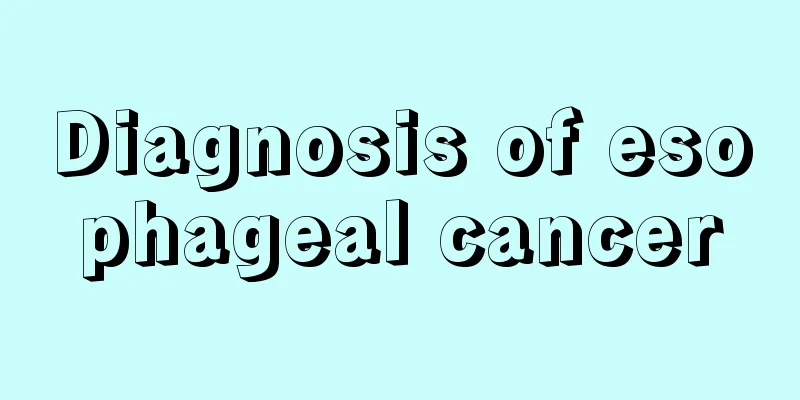Diagnosis of esophageal cancer

|
Early detection and diagnosis of esophageal cancer are very important. Anyone over 50 years old (over 40 years old in high-incidence areas) who experiences a feeling of stagnation behind the sternum or difficulty swallowing after eating should undergo relevant examinations in a timely manner to confirm the diagnosis. It is generally not difficult to confirm the diagnosis through detailed medical history inquiry, symptom analysis and laboratory tests. 1. Examination of esophageal mucosal exfoliated cells: Swallow the double-lumen plastic tube with a net balloon cell collector into the esophagus, inflate the balloon after passing through the lesion, and then slowly pull out the balloon. Take the net and wipe the material for cytological examination. The positive rate can reach more than 90%, and some early cases can often be found. 2. Esophageal X-ray examination: The signs of early esophageal cancer X-ray barium meal contrast include: thickening of mucosal folds, tortuosity such as dotted line interruption, or burr-like esophageal edge; small filling defects; small ulcer niches; localized tube wall stiffness or barium retention. In mid-to-late stage cases, irregular stenosis of the lumen, filling defects, disappearance of tube wall peristalsis, mucosal disorder, soft tissue shadows, and the paradoxical phenomenon of huge filling defects and widened lumen in intracavitary esophageal cancer can be seen, with mild to moderate dilation and barium retention at the proximal end. 3. Esophageal CT scan: CT can clearly show the relationship between the esophagus and the adjacent mediastinal organs. If the thickness of the esophagus is >5mm and the boundary with the surrounding organs is blurred, it means that there is an esophageal lesion. CT scan can fully show the size of esophageal cancer lesions, the scope and degree of tumor invasion, and help determine the surgical method, radiotherapy target area and radiotherapy plan. However, CT scan is difficult to detect early esophageal cancer. 4. Endoscopic examination: Endoscopy can directly observe the morphology of the lesion and perform biopsy under direct vision to confirm the diagnosis. It can also be combined with the live staining method to improve the detection rate. When using methylamine blue staining, the esophageal mucosa does not stain, but the cancerous tissue can be stained blue; when using Lugol iodine solution, normal squamous cells are brown due to the presence of glycogen, while the lesion mucosa does not stain. |
>>: Differential diagnosis of colon cancer
Recommend
What are the symptoms of lung cancer bone metastasis and how to prevent the occurrence of lung cancer
There are many reasons for lung cancer, so we sho...
How should I take care of my colored contact lenses?
Friends who wear colored contact lenses need to p...
Giving birth to a second child 8 years after cervical cancer surgery How to care after cervical cancer surgery
Ms. Wei (pseudonym) became a mother for the first...
What is the effect of plugging onions into ears
What are the benefits of plugging onions in the e...
What is the significance of TG index after hemisection of thyroid cancer
Thyroid cancer is a malignant tumor originating f...
How long can frozen shrimp be kept in the refrigerator
Shrimp is a seafood that many people like very mu...
Analysis of measles-rubella combined vaccine
Measles-rubella and bivalent vaccines are a way t...
What are the effects of mixing sesame oil and honey
In fact, the therapeutic value of the mixture of ...
What to do if you eat foot odor salt
Salt plays an indispensable role when cooking, so...
Is there a big difference between frying red dates and not frying them?
Red dates are a very suitable ingredient for heal...
Does a slight fetal movement count as one?
It is a common phenomenon for pregnant women to e...
Can I still get cervical cancer at the age of 46?
Cervical cancer is still possible at the age of 4...
How to treat white bubbles in the mouth?
The appearance of white bubbles in the mouth is a...
What should I pay attention to after renal hamartoma surgery
What should I pay attention to after renal hamart...
Will women still have menstruation after pituitary tumor surgery? What are the precautions after pituitary tumor surgery?
The pituitary gland is used to secrete hormones. ...









